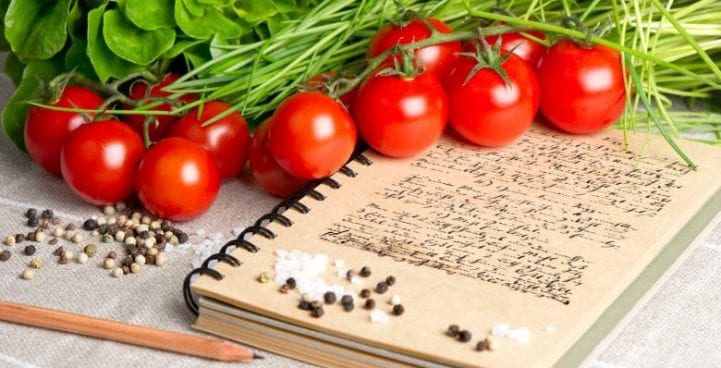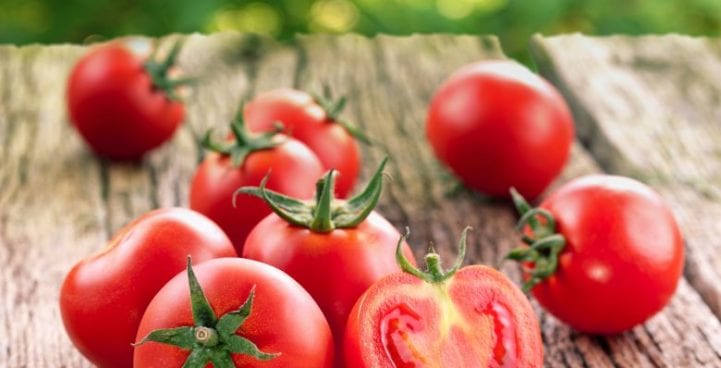Fresh from the vine, as a sauce, out of a tube, or made into soup – tomatoes are a real all-rounder and an essential player in so many dishes. We take a look at why tomatoes are so popular and why not all tomatoes are the same. Plus, we ask the question many have posed before: is the tomato a fruit or vegetable?
So, is the tomato a fruit or vegetable?
All around the world, the tomato is a top ten culinary fruit. Yes, it definitely is a fruit – and a mighty popular one too. In fact, more tomatoes are produced globally than any other fruit (170m tones), even more than nature’s fast food, the banana (100m tones).
Health benefits of tomatoes
The tomato is a low-calorie fruit, consisting almost entirely of water. When exposed to plenty of sun and ideal soil conditions, tomatoes contain higher levels of vitamins A, B, C and E than almost any other vegetable (if we think about how it is generally considered and eaten). They are also rich in magnesium, iron, calcium and phosphorous.
Phytochemicals, known as carotenoids, are responsible for the colour of most tomatoes, which generally range from yellow to red. The red pigment lycopene is believed to help strengthen the immune system, and high levels are found in ketchup and tomato purée. Research suggests that for the body to optimally absorb and utilize the lycopene, tomatoes should be cooked before eating. Like most things, how a tomato tastes and whether we enjoy its taste is a subjective matter. However, there are several factors that can benefit how ripe a tomato is, along with its taste. The variety naturally plays an important role in flavor, as do the sugar and acid content, the tomato’s firmness, how it is prepared, the aroma and, of course – and this is a key factor – the temperature at which the tomato is eaten. Some people prefer chilled tomatoes while others prefer them warmer.

What is the best way to store tomatoes?
As with all fresh food, storing tomatoes in the right way will directly affect their taste.
> When storing tomatoes in the refrigerator, make sure that they are completely ripe. Although the cool temperatures in the refrigerator slow the rate at which tomatoes perish, they also stop them from ripening fully. Tomatoes are climacteric fruit, i.e. they continue to ripen after being harvested, so you should only place them in the refrigerator once they are perfectly ripe
> Once they are optimally ripe (from your point of view) you can simply eat the tomatoes right away, cook them as desired, or refrigerate them
> For a more intense taste experience, we recommend removing tomatoes from the refrigerator and allowing them to come to room temperature before eating.
Grow your own tomatoes for optimal freshness
And, for the freshest possible experience, you can, of course, grow your own tomatoes in your garden or on your balcony. This way you can ensure that they have reached their optimum ripeness before picking them, and then eat them straight away at their very best.
Tomatoes – available all year round
That so many tomatoes are consumed is, of course, partly due to the fact that they can be purchased all year round. In India domestically cultivated tomatoes are available from January to December.
Tomato varieties are steadily growing
Over recent years, the variety of tomatoes available has steadily increased. It used to be that our choices were restricted to round, oblong, beef or cherry tomatoes. Nowadays, baby plum tomatoes, grape tomatoes and tomatoes on the vine have joined the club, and these newer varieties are currently among the most popular.
Tomatoes on the vine last for longer after harvesting and ripen evenly on the plant, which doesn’t happen if they are harvested from the vine too early. Optimum ripening means that tomatoes on the vine contain maximum nutrients and boast exceptional flavor. Cherry tomatoes, cocktail tomatoes and beef tomatoes are all available on the vine.

Different colors, shapes and sizes
Tomatoes come in all sorts of different shapes and a wider range of colours than you might expect. Apart from round tomatoes – probably the best-known type – there are oblong, flat, plum-shaped, pear-shaped and date-shaped tomatoes. And the classic red tomato sits alongside yellow, orange, brown-black, green, purple and even black varieties.
How poisonous are unripe tomatoes?
Tomatoes belong to the nightshade family, which means that they sometimes contain toxic substances. This mainly relates to unripe, green tomatoes, and to the leaves and stalk of the plant, which contain the natural poison solanine. If consumed in large quantities, solanine can cause nausea and headaches. Solanine helps the plant to protect itself against pests and reduces the growth of bacteria and mould.
Whilst there are numerous sources that claim otherwise, we’d recommend that you always eat only ripe tomatoes and make sure that you remove the green stem base (which contains solanine even if the tomato is ripe) when consuming or preparing tomatoes.
You don’t have to worry about eating tomatoes that are naturally green and that don’t change colour on ripening. For example, the ‘Evergreen’, ‘Green Zebra’ and ‘Green Grape’ varieties.
Tomato facts
> There are over 20,000 different varieties of tomatoes
> The first cultivated tomatoes were yellow and cherry-sized, earning them the name golden apples.
> The largest tomato on record was just shy of 4kg in weight
> Tomato seedlings have been successfully grown in space
Do you have any tomato tips or recipes you’d like to share? We’d love to hear from you! Feel free to reach out to us on Facebook, Twitter, Instagram
For more information and service you can call our helpline 1800-2333-444 or email us at [email protected] as well as send us your feedback on the form.